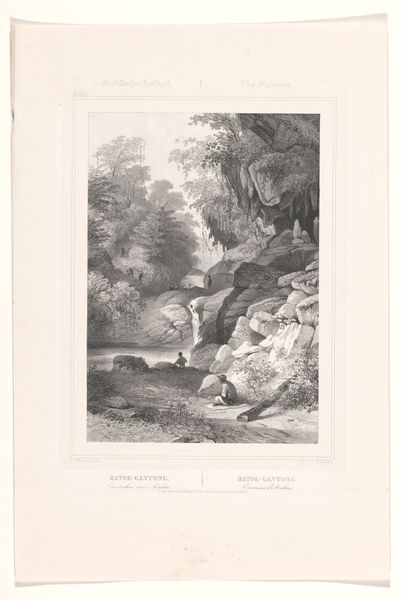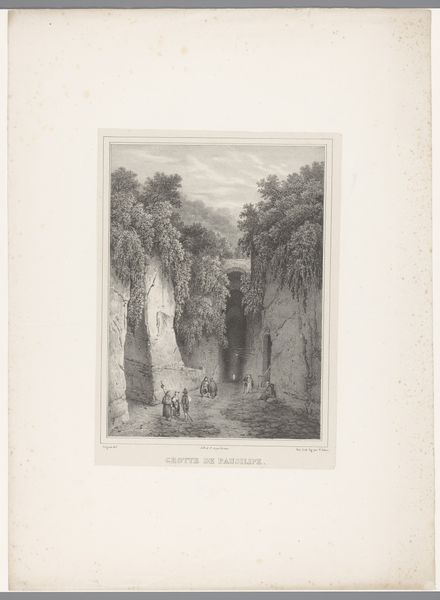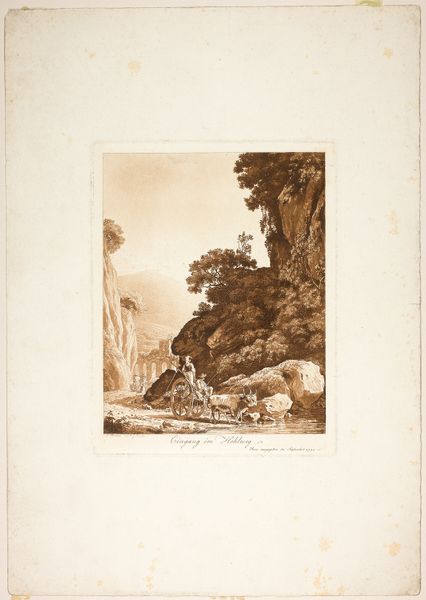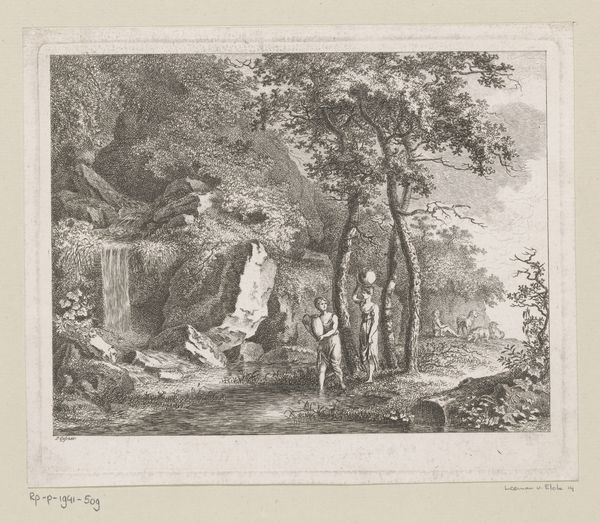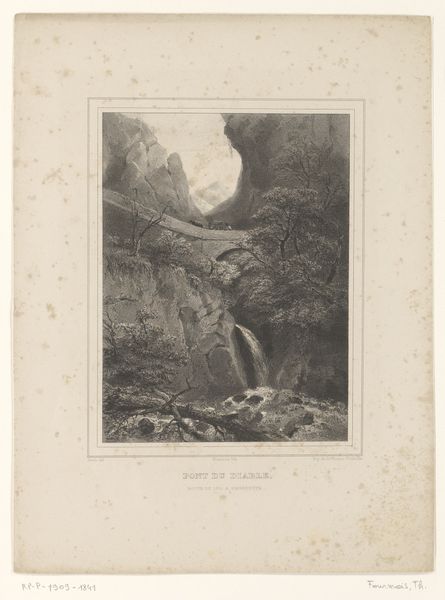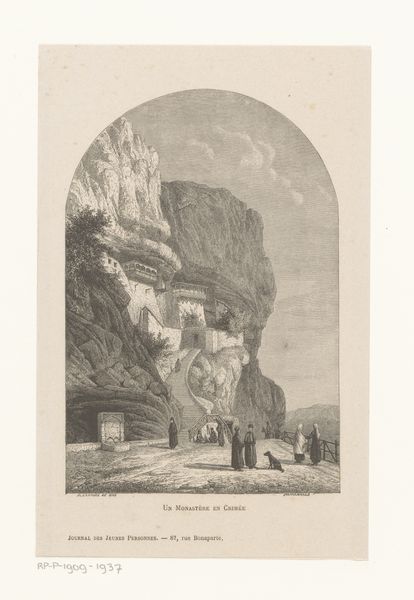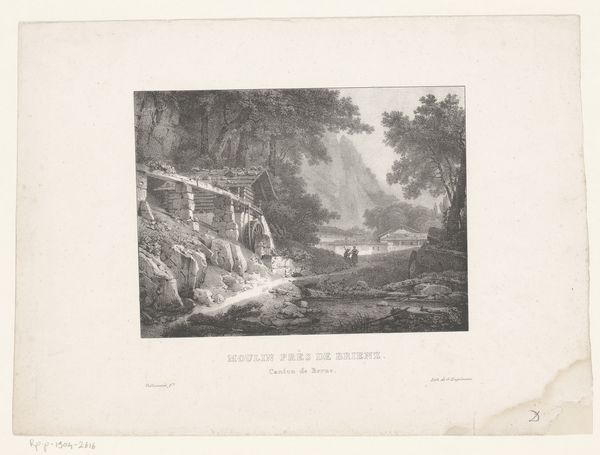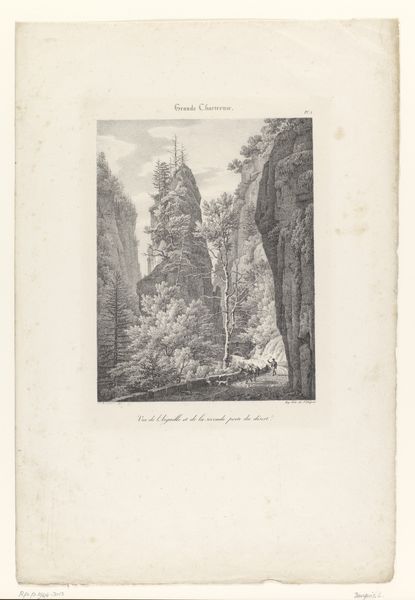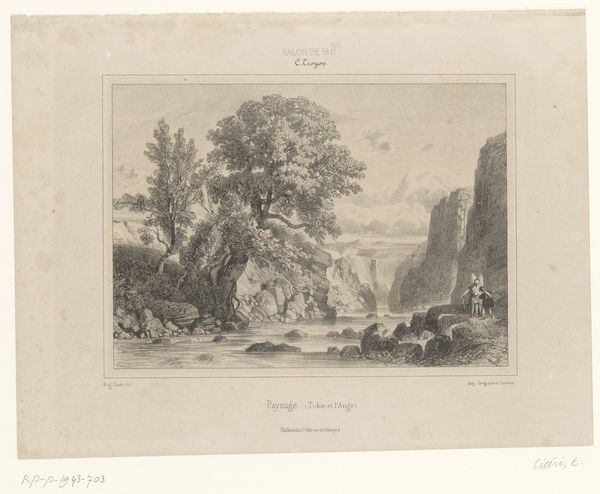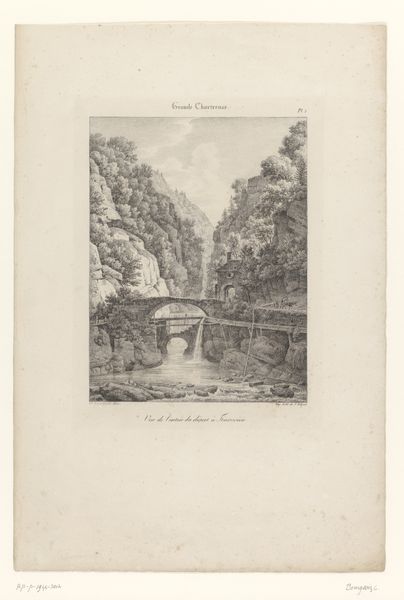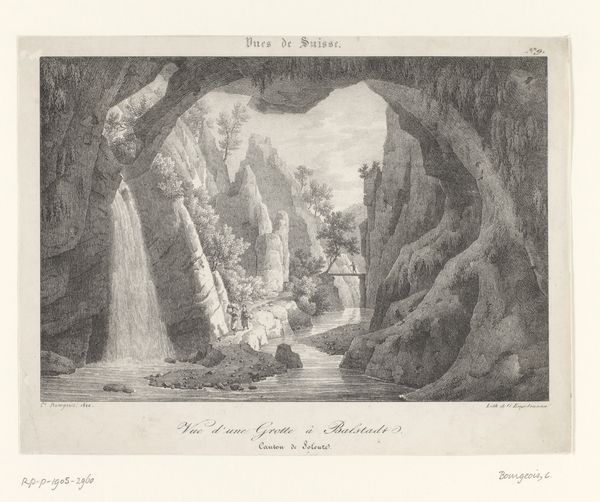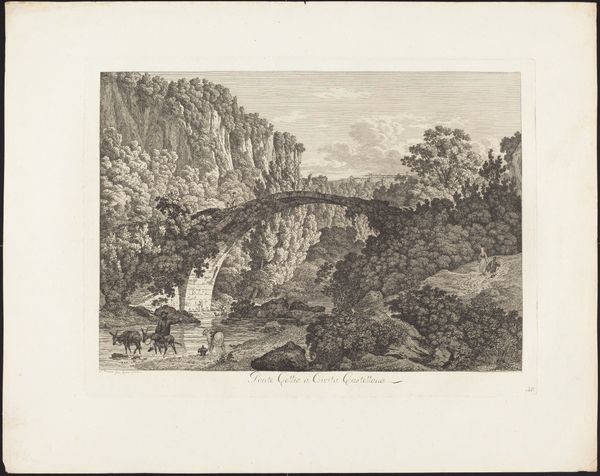
drawing, print, paper, engraving
#
drawing
# print
#
landscape
#
paper
#
romanticism
#
engraving
Dimensions: height 559 mm, width 417 mm
Copyright: Rijks Museum: Open Domain
Editor: This is "Grotto of a Hermit in the Ravines near Sorrento," a drawing and engraving made between 1824 and 1826 by Alexis-Victor Joly. It feels so…remote. A bridge connects what seems like two sides of a divide, and there are people walking towards a mysterious cave. What do you make of this piece? Curator: It's fascinating to consider this work within the Romanticism movement. Think about the emphasis on individualism and the power of nature that characterized that period. What narratives do you see here in terms of isolation and spiritual refuge? How does the representation of the human figures, almost dwarfed by the landscape, speak to the relationship between humanity and the environment during a time of increasing industrialization? Editor: I see what you mean. The people are tiny in comparison, like nature is so much bigger and more powerful. The setting feels deliberately separate from everything else. Almost like it is meant to invite us into a different world? Curator: Exactly. Now consider how this "hermitage," this intentionally isolated space, intersects with gender. Who historically had access to such spaces of retreat, both physically and mentally? What possibilities might a landscape like this represent, particularly for women during that time? Perhaps the idea of solitude was a gendered privilege? Editor: I had never thought about that before. It is possible that this space, the artist’s romanticized ideal, could not necessarily be experienced by everyone, because of their gender, social status or race? It's so important to consider who is included and excluded in artistic visions. Curator: Indeed. These landscapes are never neutral. By asking who gets to occupy and benefit from the ‘romantic’ isolation represented in art, we can see power dynamics reflected. This helps us consider both historical contexts and current systems. Editor: This has really shifted how I view not just this artwork, but landscapes in general. There is an encoded politics there that I hadn’t fully understood before. Curator: And hopefully inspires you to question, excavate, and connect seemingly disparate elements for a more inclusive and accurate history.
Comments
No comments
Be the first to comment and join the conversation on the ultimate creative platform.
